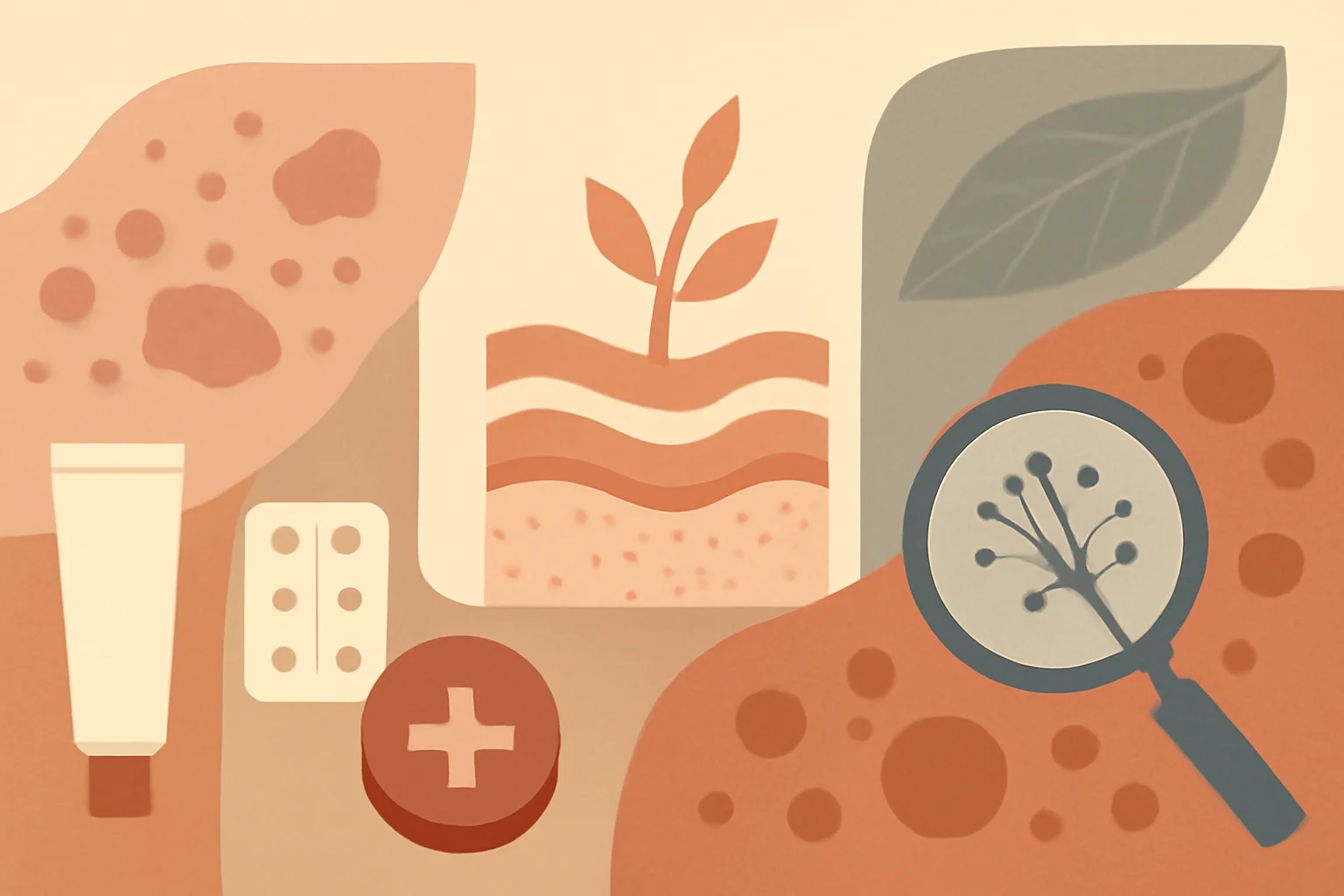
Eczema or Skin Fungus? How to Recognize and Treat Them?
The skin is one of our largest organs and plays a crucial role in maintaining our health. However, there are numerous skin problems that can directly affect our quality of life. Eczema and fungal infections are two common conditions that are often confused, as both can cause rashes and irritation. Eczema, also known as atopic dermatitis, is a chronic inflammatory skin disease characterized by itching and dry skin. In contrast, fungal infections, which are the result of a fungal infection, typically cause red, itchy patches and often develop in moist, warm areas of the skin.
Skin problems are often complex, and their treatment is not always straightforward. Various factors, such as genetics, environmental influences, and lifestyle, can contribute to the development of eczema and fungal infections. Proper diagnosis is essential for effective treatment, as the two conditions require different approaches. With the right information, we can navigate the world of skin diseases more easily and better understand why proper skin care and prevention are important.
Characteristics and Causes of Eczema
Eczema, or atopic dermatitis, is a chronic skin disease that causes inflammation of the skin. The condition typically begins in childhood, but it can also occur in adults. The manifestations of eczema can vary widely, from dry, red, itchy patches to blistering, weeping areas of skin. Itching is often the most uncomfortable symptom, which frequently leads to sleep disturbances.
The causes of eczema are multifaceted and not yet fully understood. Genetic predisposition plays an important role: if there is a history of eczema, allergies, or asthma in the family, there is a higher likelihood of developing it. Environmental factors, such as pollution, temperature fluctuations, and stress, can also contribute to flare-ups of the condition. Additionally, certain foods, such as milk, eggs, or nuts, can trigger allergic reactions that may exacerbate eczema.
The weakening of the skin barrier function also plays a key role in the development of eczema. In healthy skin, the protective layer prevents water from evaporating and harmful substances from entering. In eczema, this barrier is compromised, making the skin more susceptible to irritation and inflammation. During treatment, hydration is crucial, as proper skin care can help improve the skin’s condition.
Symptoms and Treatment of Fungal Infections
Fungal infections, also known as mycosis, are a fungal infection that can develop on the skin, hair, and nails. The most common forms of fungal infections include athlete’s foot (tinea pedis), nail fungus (tinea unguium), and body-wide fungal infections (tinea corporis). Fungal infections typically cause red, itchy patches that may sometimes peel and can appear in a ring-like shape on the skin.
Fungal infections primarily thrive in warm, moist environments where conditions are favorable for fungal growth. Public baths, swimming pools, and situations where feet are kept in closed shoes for extended periods can easily lead to infection. In treating fungal infections, it is important to establish good hygiene practices, such as thoroughly drying the feet, wearing appropriate footwear, and regularly cleaning the skin.
Treatment for fungal infections usually involves the application of antifungal creams or ointments. In more severe cases, oral antifungal medications may be necessary. The duration of treatment typically ranges from a few weeks to several months, and it is important to follow the healthcare provider’s instructions carefully.
How to Differentiate Between Eczema and Fungal Infections
Understanding the difference between eczema and fungal infections is essential for effective treatment. Eczema is generally associated with dry skin and irritation, while fungal infections tend to cause red, itchy patches that often peel. Fungal infections typically develop in moist, warm areas of the skin, while eczema can appear on any skin surface.
To establish a diagnosis, it is important to pay attention to the symptoms and appearance. Eczema usually presents with itchy, dry skin, and in addition to redness, blisters may form. In contrast, fungal infections tend to have a ring-shaped appearance, and the patches are usually well-defined.
If you are unsure whether you are dealing with eczema or a fungal infection, it is advisable to consult a dermatologist. The specialist can provide an accurate diagnosis after examining the skin and recommend the most appropriate treatment. Early diagnosis and treatment can help prevent the worsening of symptoms and the development of chronic issues.
The Role of Prevention in Avoiding Skin Problems
Skin problems, such as eczema and fungal infections, can often be prevented. In the case of eczema, it is particularly important to keep the skin hydrated, as dry skin is more prone to irritation. By establishing a proper skin care routine that includes the use of moisturizing creams, we can significantly reduce skin irritation and the likelihood of inflammation.
To prevent fungal infections, it is crucial to adhere to good hygiene practices. Thoroughly drying our feet, wearing appropriate footwear, and being cautious in public areas, such as swimming pools or locker rooms, can help avoid infections. Regularly cleaning the skin and allowing moist areas to ventilate also contributes to preventing fungal infections.
Healthy eating and stress management also play a key role in maintaining skin health. Adequate intake of vitamins and minerals, along with regular exercise, supports the skin’s regeneration and defense mechanisms. Additionally, reducing stress can help prevent the recurrence of eczema, as stress negatively affects skin condition.
Finally, it is important to note that this article does not constitute medical advice. For any health concerns, it is essential to consult your physician and follow their recommendations. Seeking professional help for the treatment and prevention of eczema and fungal infections can help us find the most suitable solutions.

